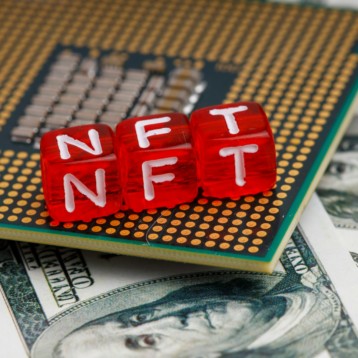Spending Bitcoin or Ethereum for daily expenses has been quite stressful in recent years. With the introduction of crypto debit cards, the experience has improved dramatically. Due to the global adoption and use of cryptocurrencies, these payment cards have experienced phenomenal growth.
Sources like Tripple-a, a business and finance-related channel, have reported that the number of crypto users worldwide has grown to over 320 million. Other experts predict that crypto users might exceed one billion by the end of 2022. As the number of crypto users increases, there is no doubt that the demand for crypto cards will remain high.

So what are crypto debit cards?
Crypto debit cards are payment cards used primarily for spending cryptocurrency. However, these cards function similarly to regular debit cards. This implies that you can use these cards to quickly purchase in-store or online. Additionally, your crypto debit card makes ATM withdrawals simple.
How do crypto debit cards work?
So you know what crypto debit cards are. But how do they work?
Since crypto is the main currency, you can only fund your crypto cards through your cryptocurrency wallet. Different cryptocurrency debit cards have different funding processes. These processes include stages of how you fund your debit card to how the payment happens.
Here are the different processes of funding crypto debit cards.
- Crypto to fiat
This is the most common process of funding crypto debit cards. This means you have to first convert your crypto to fiat before you fund your crypto debit card. To convert the crypto to wallet, you must exchange the crypto for fiat on the provider’s platform.
After an exchange with the prevailing market rate, the fiat currency gets deposited in your account. From your account, you can then fund your crypto card whenever the need arises. An example of a card that falls in this category is the Club Swan debit card.
2. Crypto to stablecoins to crypto
You must first convert your cryptocurrency to stablecoins before funding these cards. Afterwards, you can convert the stablecoins into fiat at the pegged ratio.
By first converting your cryptocurrency to stablecoins, you help avoid the volatile nature of the crypto market. However, if the value of the pegged fiat decreases, so does the value of stablecoins. The U.S dollar remains the most popular fiat currency linked to stablecoins.
3. Crypto to stablecoins
This mechanism resembles that of converting cryptocurrency to stablecoins to fiat. However, a part of the process is automatic, thanks to the cards’ system.
However, to convert your cryptocurrency for stablecoins, you must do it manually. The system automatically converts the stablecoins to fiat currency during payment processing.
Those unaware of this process might assume that the transaction happens in stablecoins, however, this is untrue.
What are the benefits of crypto debit cards?
- Convenience
The primary purpose of developing these cards was to provide the utmost convenience when spending your crypto. Less than a decade ago, crypto enthusiasts only used crypto exchanges and wallets to make transactions whenever they needed to spend their crypto. The process was long, and the experience was awful.
Thanks to these cards, you can now spend your crypto anywhere and anytime.
2. Highly flexible
You can access the flexibility of crypto debit cards in various ways. One way is by looking at how many cryptocurrencies the crypto card supports. Most crypto debit cards can support multiple cryptocurrencies. While some crypto cards only support a few cryptocurrencies, others can support hundreds.
Club Swan platform, for instance, only supports nine different cryptocurrencies. These cryptocurrencies include well-known coins like Ripple, Litecoin, Ethereum, and Bitcoin.
Some cryptocurrency debit cards also support fiat money and stablecoins. GBP, EUR, and USD are the frequently supported fiat currencies. So, you may convert your cryptocurrency to any local currency whenever you travel.
Some crypto card issuers support multiple payment methods to add to their flexibility. These additional payments include credit, debit, E-wallets, and bank transfers. Banxa, Simplex, Samsung pay, Google Pay, and Apple pay are some popularly supported e-wallets.
Also, choosing a crypto debit card supported by MasterCard, Visa and UnionPay allows card usage anywhere worldwide.
3. Easy to use
At first, it may sound challenging to handle cryptocurrency debit cards. However, using these cards is rather straightforward. When making a payment, all you have to do is swipe your card or enter your card details.
On the other hand, a virtual card enables smooth and error-free online transactions. You can avoid the inconvenience of carrying your actual card around by using this card. You can create a distinct virtual card for regular transactions to prevent fraud.
It may take a while for card issuers to confirm some cryptocurrencies. The card issuer covers the payment to ensure continuous, uninterrupted cryptocurrency circulation. Once the confirmation has been successful, the provider will deduct the amount from your cryptocurrency balance.
4. High Versatility
Cryptocurrency, in contrast to fiat currency, is very versatile. First, it is challenging for a country’s economic instability to affect the market value of cryptocurrencies. Additionally, this value is not affected by cross-border transactions or currency exchanges.
For instance, Venezuelans have turned to use Bitcoin and hard currencies to avoid the impacts of inflation. This demonstrates how easily cryptocurrency can withstand inflation or other forms of economic instability.
5. Free Rewards
The majority of cryptocurrency card issuers in the market provide rewards to cardholders. From one card to the next, these rewards are different. Cashback, referral incentives, and staking rewards are some popular reward programs.
However, among crypto card issuers, cashback rewards remain the most popular form of crypto card rewards. To receive these benefits, you must make purchases using your crypto card. The cashback rewards you receive depend on your purchases or card tier.
Top-tier crypto cards from some cryptocurrency card providers come with large cashback rewards. Unfortunately, most of these card companies only offer rewards after you make certain purchases.
Referral rewards are another great reward system, although only a few crypto card issuers use them. You must recommend the platform to friends and family to earn these rewards. For instance, the Club Swan platform offers 20% of the referral’s membership fee as a reward. You must share your unique link with an interested new member to earn these rewards. Also, the more referrals you register, the more likely you will upgrade your membership level.
Another remarkable reward system is crypto staking. Staking is putting your crypto to work by giving it to a blockchain system. You earn rewards depending on how much and how long you’ve staked.
6. Additional perks
Apart from rewards, some crypto card issuers go out of their way to offer additional perks to their card holders.
For example, Clubswan.com offers its exclusive members concierge services. These services include lounging and traveling discounts.
Other crypto card issuers offer a free subscription to popular streaming platforms like Spotify, Netflix, and Amazon prime. Access to airport lounges, Airbnb discounts, and jet partnerships are other incredible perks.
7. Security
Striving for the security of your cryptocurrency is essential with the rising number of cryptocurrency frauds each year. CNBC’s business and finance channel reported a crypto loss of over $14 billion in 2021. Chainalysis reports, on the other hand, show that over $1.9 billion worth of cryptocurrency has already been lost during the first quarter of this year.
Most crypto card issuers have implemented new and sophisticated security measures due to these cyber crypto scams. First, many well-known card issuers have an app that allows you to remotely manage every aspect of your card, including security. This indicates that you can use this app to freeze your card, update your PIN, and report card loss.
Besides remote security, crypto card companies have adopted new security measures. These security measures include two-factor authentication, passphrase, and biometrics.
What are the drawbacks of crypto debit cards?
- Chances of owing taxes
According to IRS (Internal Revenue Service), cryptocurrency falls under capital assets. This means that crypto is in the same category as bonds and stocks. So for any capital gains, you must pay taxes.
The capital gain tax you pay depends on the profit earned and the time you have held your crypto, and how long you’ve held the coins.
- Expensive to transfer funds to a different account separate from your card issuer
For instance, transferring funds from a Club Swan account to a different account is nearly impossible. And even if the process turns out successful, it’s pretty expensive.
Conclusion
Here is all you need to know about crypto debit cards before you apply for one. And while choosing your cards, be sure to choose one that resonates with your needs and lifestyle.










